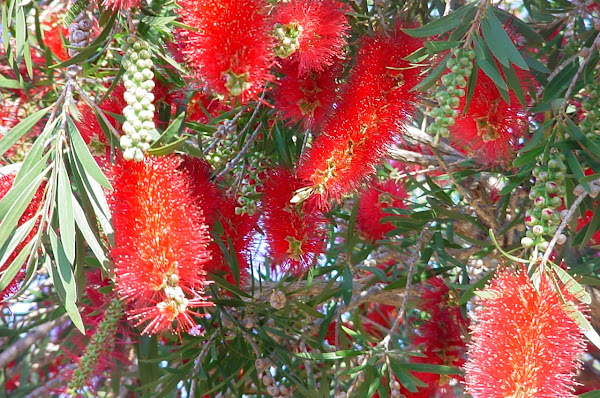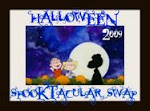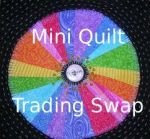My guild is proposing a new exhibition category called Abstract Art Quilts. They are going to be allowing entries with only two layers in this category only. I'm curious as to how other people/guilds view 'two-layer' quilts.
In my time on the exhibition committee the emphasis was always on the traditional definition. Under the Conditions of Entry published in the handbook, No.5 states
"A quilt is defined as three layers of material held together by stitching at regular intervals, or by being tied at regular intervals." Is it proper to change that definition for one special-interest category? Can two-layer and three-layer items be properly judged next to each other? Can quilters entering in other categories make the case that they should be allowed two-layered items? Can a traditional quilt compete with an abstract art quilt for 'Best of Show'? Should they be in competition?
 |
| My Grandmother made this queen size quilt. |
1quilt
noun \ˈkwilt\
Definition of QUILT
1
a : a bed coverlet of
two layers of cloth filled with padding (as down or batting) held in place by
ties or stitched designs
2
of
houses and parks>
Origin of QUILT
Middle English quilte mattress, quilt, from Anglo-Frenchcoilte, from
Latin culcita mattress
First Known Use: 14th century
 |
| My Great Grandmother made this double bed quilt. |
2quilt
verb
Definition of QUILT
transitive verb
1
a : to fill, pad, or
line like a quilt
b (1) : to stitch, sew,
or cover with lines or patterns like those used in quilts (2) : to stitch (designs)
through layers of cloth
c : to fasten between
two pieces of material
2
: to stitch or sew in layers with
padding in between
intransitive verb
1
: to make quilts
2
— quilt·er noun
First Known Use of QUILT
1555
Quilting has been moving in exciting directions in recent years. We have seen the rise of new quilting styles like the
Modern Quilt movement. Quilts are being recognised as great works of art and being
sold for sums of money reflecting their true worth. There are new embellishing techniques and media other than textiles being used (i.e.
pencils and
paint). This is a great era to be a quilter. There are no bounds to what can be done.
 |
| Small quilt I made. |
But at what point does a quilt stop being a quilt and become textile art? How does a guild dedicated to promoting the "quilt" deal with members who fit more properly in to the textile art category? Do they simply change the definition of quilt to pander? Or do you think they change the definition of quilt because how we quilt is truly evolving? There are certainly many
historical examples of two-layer patchwork 'coverlets' that were viewed as quilts in their day. In our warm Australian climate does every quilt need to have wadding?
 |
| 8" Art (?) Quilt made by me. |
Purists will always have difficulties with change. But are we "throwing the baby out with the bathwater?" (i.e. too quick to discard something valuable.)
These are all interesting ideas and questions. I would love to have some feedback with your opinions.
From Wikipedia - Making Quilt Art:
A quilted work of art is generally defined as two layers of cloth held together by stitching. In most cases, a middle batting layer made of polyester, cotton, wool or silk is also incorporated.
Although quilt art originated in traditional quilting techniques, quilt artists now may use many different processes to create their artwork, including painting, dyeing, stamping, piecing, collage, printing (often incorporating a photograph printed onto fabric), appliqué, and other complex cloth processes.
Addendum: I had tea with a lovely non-quilting friend last night and briefly explained the issues. She stated that it would water down the essence of what a quilt is. What do you think?



































































